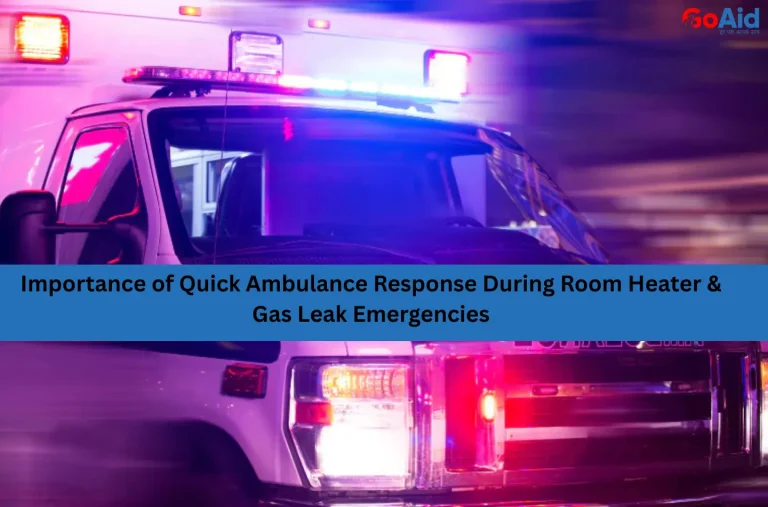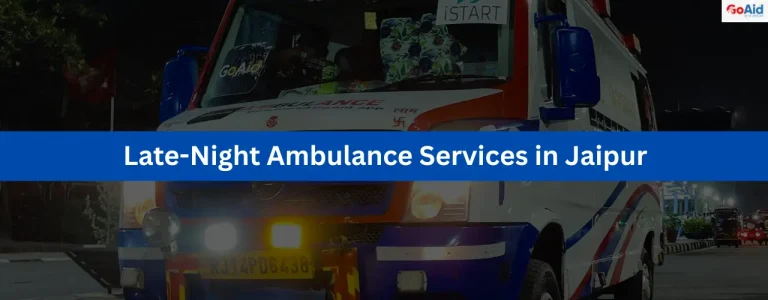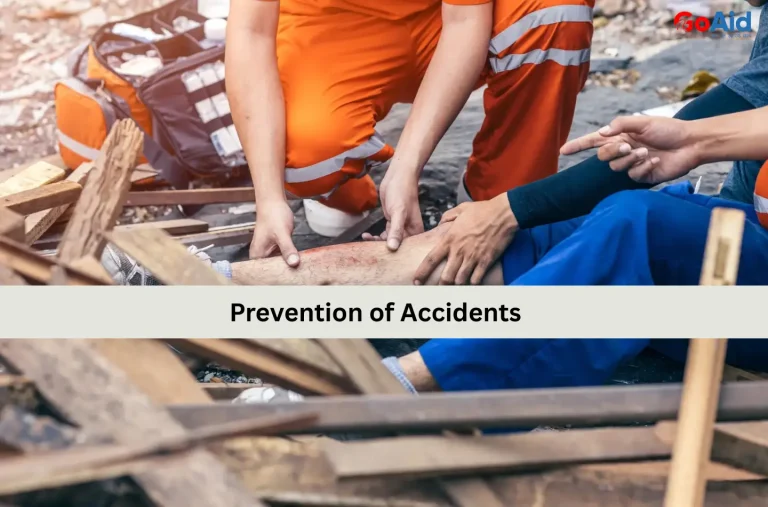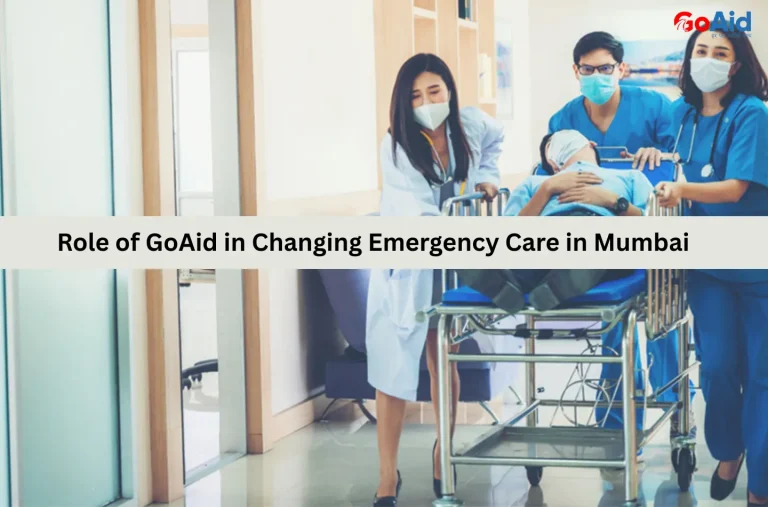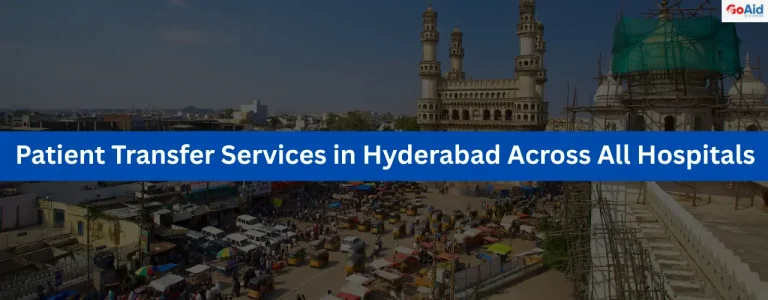In India, ambulance services are very important in agriculture and rural areas. The best ambulance services ensure timely care and attention during medical emergencies care. Also, these ambulance services help to improve labor safety during workplace injuries and emergencies in Agriculture & Rural Sites.
This blog provides you the information about the Need for Ambulance Services in the Agriculture & Rural Sites, its Current Challenges, and how these problems can be solved. Are you interested in reading about it? If your answer is yes, then you donŌĆÖt need to wait any longer
LetŌĆÖs start reading
Overview of the Agriculture & Rural Sites
Agriculture and rural sites involve physically demanding work with high risks of injuries and medical emergencies. Limited healthcare infrastructure and challenging transport conditions often delay critical care. Ambulance services for agriculture and rural sites are essential to bridge this gap, offering prompt emergency response and labor injury ambulance support. These services enhance agriculture and rural sites’ safety by providing first aid and rapid medical evacuation.┬Ā
Agriculture and rural sites ambulance service improves worker welfare, reduces injury severity, and ensures compliance with health and safety regulations, making them indispensable for sustainable rural development and effective emergency management.
Common Health & Safety Problems at Agriculture & Rural Sites
Agriculture and rural sites face several health and safety challenges that require immediate attention. Ambulance services are essential for quick emergency response and protecting labor safety in these remote and high-risk environments.
- Pesticide Exposure: Contact with harmful chemicals can cause severe health issues, requiring prompt ambulance response for effective emergency care and labor injury treatment in agriculture and rural sites.
- Machinery Accidents: Heavy machinery use increases injury risks, making on-site ambulance services critical for fast medical intervention and preventing fatalities at agricultural and rural locations.
- Heat Stroke and Dehydration: Prolonged heat exposure often leads to heat stroke or dehydration, demanding immediate first aid and ambulance support to save lives in rural agricultural areas.
- Animal Attacks: Injuries from livestock or wild animals need rapid ambulance care to manage wounds and prevent complications, ensuring worker safety on agricultural sites.
- Falls and Slips: Uneven fields and wet conditions cause falls requiring urgent ambulance attention to reduce injury severity in agriculture and rural sites.
- Cuts and Lacerations: Sharp farming tools can cause serious cuts needing quick first aid and ambulance services to avoid infections or severe blood loss.
- Respiratory Issues: Dust and allergens in rural areas can trigger breathing emergencies, where ambulance services provide timely care and transport.
- Waterborne Diseases: Contaminated water causes infections demanding urgent medical response, highlighting the need for ambulance availability in agriculture and rural sites.
Why Ambulance Services Are Essential for the Agriculture & Rural Sites?
Ambulance services provide vital, timely medical emergency care at agricultural and rural sites where healthcare access is limited. They ensure labor safety, quick first aid, and rapid transport, minimizing risks from injuries and delays in treatment.
- Rapid Emergency Response: Ambulances deliver fast medical help to agriculture and rural sites, reducing the risk of complications from delayed treatment and improving survival rates in emergencies.
- On-Site Medical Care: Equipped ambulances offer immediate first aid and stabilization on-site, crucial for agriculture workers who face injury risks far from hospitals.
- Labor Injury Support: Ambulance teams specialize in handling common agriculture-related injuries like machinery accidents and cuts, ensuring proper emergency care on-site.
- Heat-Related Illness Management: Ambulances provide quick treatment for heat stroke and dehydration, common in rural farming, helping prevent severe health consequences.
- Transportation to Hospitals: Ambulances ensure safe, efficient transport from remote rural areas to medical facilities, overcoming infrastructure and distance challenges.
- Handling Animal-Related Injuries: Ambulance services manage trauma from animal bites or attacks, providing critical emergency care for rural laborers.
- Compliance with Safety Regulations: Having ambulance services on-site helps agriculture businesses meet legal and workplace safety requirements, protecting both workers and employers.
- Reducing Mortality Rates: Timely ambulance interventions significantly lower fatality rates by providing immediate emergency response in agriculture and rural medical emergencies.
Types of Ambulance Services Might be Required in the Agriculture & Rural Sites
In India, different types of ambulances serve agriculture and rural sites to meet varied emergency needs, ranging from basic first aid to critical care, ensuring comprehensive medical support tailored to on-site risks and labor safety requirements.
- Basic Life Support (BLS) Ambulance: Provides essential first aid, oxygen support, and patient transport for common injuries occurring on agriculture and rural sites.
- Advanced Life Support (ALS) Ambulance: Equipped with advanced medical equipment and trained paramedics to handle severe trauma and critical conditions in rural emergencies.
- ICU Ambulance: Offers intensive care facilities during transport for patients with life-threatening injuries or medical emergencies in agriculture zones.
- Labor Injury Ambulance: Specialized ambulance designed to manage typical workplace injuries in agriculture, providing fast emergency care and stabilization.
- Maternity Ambulance: Dedicated ambulances to safely transport pregnant women from rural areas, offering emergency maternity care on-site and during transit.
- On-Site Ambulance Service: Ambulances stationed directly at agriculture or rural locations for immediate response and first aid during medical emergencies.
- Mobile Medical Units: Equipped with medical personnel and supplies, these units provide on-site treatment, reducing the need for hospital transfers in rural settings.
- Patient Transport Ambulance: Non-emergency ambulances used for transferring patients who require medical supervision but not critical care in rural agriculture areas.
Also Read: Difference between BLS Ambulance and ALS Ambulance
Current Challenges in Providing Ambulance Services to Agriculture & Rural Sites
In ambulance, providing ambulance services in agriculture and rural sites comes with several unique obstacles. These challenges directly affect emergency response, labor safety, and the delivery of efficient healthcare in remote and underserved areas.
- Poor Road Infrastructure: Many agricultural & rural sites lack proper roads, delaying ambulance access and emergency response, and affecting the timely delivery of rural emergency care services.
- Limited Network Connectivity: Weak mobile networks in rural zones hinder ambulance coordination, affecting on-site ambulance service and real-time communication during medical emergencies.
- Long Distances to Hospitals: Most agriculture & rural sites are far from healthcare centers, increasing transport times and complicating emergency care delivery during critical medical situations.
- Lack of Trained Medical Personnel: Shortage of skilled paramedics in rural areas reduces the quality and effectiveness of ambulance services in agriculture zones.
- Financial Constraints: Many rural or small-scale farming setups cannot afford private ambulance services, limiting availability of industrial ambulance support for emergencies.
- Inadequate Awareness: Farmers and rural laborers often lack awareness of emergency ambulance services and when to call for help, delaying response during critical situations.
- Weather & Terrain Challenges: Harsh weather and difficult terrains in agriculture zones hinder ambulance movement and accessibility during urgent medical situations.
- Lack of On-Site Ambulances: Most rural agriculture sites do not have stationed ambulances, causing delays in first aid and immediate care for labor injuries or accidents.
How Can These Problems Be Solved?
In India, on-site ambulance services offer the most practical and effective solution for tackling healthcare and emergency challenges in agriculture and rural sites. They enhance safety, reduce response time, and improve medical outcomes for laborers.
- Deploy On-Site Ambulance Service: Stationing ambulances directly at agriculture & rural sites ensures immediate response, improving emergency care delivery and reducing critical delays in remote locations.
- Mobile Medical Units for Remote Areas: Fully equipped mobile ambulances can provide rural healthcare, routine checkups, and emergency response in isolated agriculture zones with poor hospital access.
- Improved Road Infrastructure: Government and private investment in rural roads will enhance ambulance reach, supporting fast and safe emergency transport from agriculture sites.
- Training Local Paramedics: Developing rural-based paramedics ensures the availability of skilled responders who understand local challenges and can deliver quality ambulance support.
- Use of GPS & Radio Communication: Advanced tracking and communication tools help coordinate faster response by ambulances in areas with weak mobile networks.
- Community Awareness Drives: Educating farmers and laborers about ambulance services encourages prompt reporting of medical emergencies and better use of available healthcare.
- Public-Private Partnerships: Collaborations between government and ambulance providers like GoAid can ensure affordable, reliable ambulance services in agriculture & rural areas.
- Subsidized Ambulance Plans: Financial assistance or government-subsidized rural ambulance services can make emergency care accessible to even the poorest farming communities.
Future of Emergency Medical Services in Agriculture & Rural Sites
The future of emergency medical services in agriculture & rural sites is geared toward accessibility, innovation, and inclusion. As the demand for efficient healthcare in rural areas grows, ambulance services for agriculture & rural sites will play a pivotal role in ensuring labor safety and timely emergency care. With advancements like telemedicine integration, GPS tracking, and rapid response systems, on-site ambulance services will become more efficient and proactive, especially in remote areas facing limited healthcare infrastructure. The presence of specialized vehicles like mobile medical units and ICU-equipped ambulances will further enhance healthcare delivery in rural India.
Government-backed policies and public-private partnerships with providers like GoAid are expected to boost agriculture & rural sites ambulance services. Investments in training rural paramedics, creating first aid hubs, and ensuring 24/7 ambulance access will bridge the current gap in emergency response. In the coming years, these services will not only reduce medical emergencies in agricultural zones but also foster a culture of safety, preparedness, and well-being across IndiaŌĆÖs vast rural workforce.
Legal Obligation for Agriculture & Rural Sites
In India, ensuring medical safety for rural laborers is not just ethicalŌĆöitŌĆÖs becoming a legal and CSR-driven requirement. Employers in agriculture & rural sites must adopt structured on-site ambulance services to comply with worker welfare laws.
- Compliance with Labor Laws: Government mandates require basic healthcare and emergency support, including ambulance for agriculture & rural sites, especially where large labor forces are involved.
- CSR Responsibility: Under corporate social responsibility, organizations are encouraged to invest in rural health and safety, including setting up emergency care in agriculture zones.
- Safety Audits & Penalties: Lack of on-site ambulance services can lead to failed safety audits and financial penalties under Indian labor and factory laws.
- Worker Health Schemes: Government schemes promoting rural worker safety often offer benefits to firms providing medical emergency services in agriculture zones.
- MGNREGA Guidelines: Projects under MGNREGA require proper health safeguards, including ambulance services for rural labor on large work sites.
- Industrial Safety Protocols: Expanding agribusinesses fall under industrial safety rules, which include mandatory first aid and emergency ambulance services.
- Increased Insurance Compliance: Having on-site ambulance service supports smoother insurance claims and improves liability compliance for agriculture-based companies.
- Ethical Farming Practices: Companies promoting sustainable and ethical farming are expected to invest in ambulance at agriculture sites for worker health and dignity.
How Can GoAid Be Used as a Reliable Partner for Construction Ambulance Needs?
GoAid offers fast, affordable, and specialized emergency services, making it a trusted choice for ambulance support at construction zones. Its advanced infrastructure and trained team ensure timely response and worker safety at every site.
- On-Site Ambulance Deployment: GoAid provides on-site ambulance services at construction projects, ensuring immediate response to workplace injuries and enhancing construction site emergency care.
- 10-Minute Response Time: With a guaranteed 10-minute arrival window, GoAid reduces critical delays, offering reliable emergency response at construction sites.
- Variety of Ambulance Types: From BLS to ICU ambulances, GoAidŌĆÖs diverse fleet meets every level of medical emergency at infrastructure project sites.
- Trained Paramedic Support: Each GoAid ambulance is staffed with skilled paramedics, trained for construction zone medical emergencies and trauma care.
- 24/7 Availability: GoAid ensures round-the-clock ambulance service, a vital feature for sites operating beyond regular hours or during emergencies.
- Easy Booking System: GoAid supports app-based and call-based ambulance bookings, streamlining access to services for construction managers and site supervisors.
- Affordable & Transparent Pricing: With government-approved ambulance charges, GoAid delivers budget-friendly emergency care without compromising quality.
- Nationwide Coverage: GoAid is present in major Indian cities, making it suitable for construction companies with multiple project sites needing consistent emergency medical support.
Read More: Why Ambulance Services Are Crucial in the Oil & Gas Sector: Problems, Solutions & the Future
Case Studies/Examples
Case Study 1: Adani Group: Enhancing Emergency Response in Rural Infrastructure Projects
The Adani Group, known for its large-scale infrastructure and rural energy projects, partnered with emergency providers to ensure reliable ambulance services for agriculture & rural sites. With high-risk areas involved in renewable energy and logistics hubs, Adani implemented on-site ambulance services with trained paramedics and trauma care. This significantly improved worker safety, response time, and compliance with CSR and labor safety laws, setting an example in emergency care for rural infrastructure projects.
Case Study 2: Tata Trusts: Supporting Medical Emergency in Rural Agricultural Initiatives
Tata Trusts, through its various rural development programs, included ambulance services in agriculture zones to improve health access in remote villages. By establishing first aid on agriculture sites and connecting them with local hospitals, Tata ensured medical emergency support in rural areas. Their investment in mobile health units and ambulance for rural sites played a crucial role in reducing fatalities due to farm-related injuries and increasing awareness around labor safety in agriculture.
Conclusion to the Need of Ambulance Services in Agriculture & Rural Sites
The importance of ambulance services in agriculture & rural sites cannot be overstated. With most of IndiaŌĆÖs workforce engaged in farming and rural infrastructure, ensuring emergency response in agriculture zones is vital for worker safety, productivity, and public health. From pesticide exposure to machinery-related accidents, these environments face daily health risks that require immediate medical support.
By deploying on-site ambulance services and promoting first aid training in villages, we can bridge the gap in rural emergency care. Reliable providers like GoAid are playing a transformative role by offering affordable ambulance services, trained paramedics, and rapid response even in remote areas. The future of rural IndiaŌĆÖs workforce depends on proactive emergency medical systems, integrated into both government and private rural development projects.
Call-to-Action (CTA)
Ensure safety and swift emergency response at your agriculture or rural site with GoAid’s trusted ambulance services. With 10-minute response time, 24/7 availability, and trained paramedics, weŌĆÖre redefining rural healthcareŌĆöbook now and safeguard your workforce.
FAQs on the Need for Ambulance Services in Agriculture & Rural Sites
Question-1: Why are ambulances needed at Agriculture & Rural Sites?
Answer: Ambulances are essential for handling emergencies like injuries, pesticide poisoning, or animal attacks at rural sites, ensuring timely treatment and enhancing agriculture & rural site safety.
Question-2: What types of injuries are common in the Agriculture & Rural Sites?
Answer: Common injuries include machinery accidents, snake bites, chemical exposure, falls from heights, and cuts from toolsŌĆöall requiring immediate medical emergency care in agriculture zones.
Question-3: Is it mandatory to have ambulance services at Agriculture & Rural Sites in India?
Answer: While not always mandated, having an on-site ambulance aligns with worker safety norms and CSR obligations under Indian labor and rural health safety guidelines.
Question-4: Can private companies provide ambulance services to Agriculture & Rural Sites?
Answer: Yes, private providers like GoAid offer customized on-site ambulance services with trained paramedics for rural sites, improving safety and response efficiency.
Question-5: What should a Agriculture & Rural Sites look for in an ambulance service provider?
Answer: Key aspects include 24/7 availability, trained staff, fast response time, trauma care readiness, affordability, and ability to serve remote agriculture zones.
Question-6: What is an on-site ambulance service?
Answer: ItŌĆÖs a stationed ambulance at a rural/agriculture site, equipped to respond immediately to accidents or health issues without waiting for city emergency services.
Question-7: How does an ambulance service improve worker safety on Agriculture & Rural Sites?
Answer: It provides immediate treatment, reduces fatality risks, enables fast hospital transport, and supports preventive health measures like first aid and awareness.
Question-8: Can ambulance services be customized based on the size of the project?
Answer: Absolutely. Services can be scaled from basic first-aid units to ICU ambulances based on workforce size and risk level at agriculture or rural sites.
Question-9: Are there any legal obligations for emergency medical support at Agriculture & Rural Sites?
Answer: Yes, many states require large rural/agriculture projects to provide basic medical aid, including ambulance services, as part of labor safety compliance.
Question-10: How much does it cost to hire an ambulance service for a Agriculture & Rural Sites project?
Answer: Costs vary by service type and location, but GoAid offers affordable, government-approved pricing tailored for agriculture and rural infrastructure sites.
Question-11: Do ambulance providers offer trained paramedics along with the vehicle?
Answer: Yes, providers like GoAid deploy experienced paramedics with each ambulance, capable of handling trauma and rural site-specific medical emergencies.
Question-12: Can ambulances be equipped with trauma kits for Agriculture & Rural Sites-related injuries?
Answer: Yes, ambulances can carry trauma kits, snake-bite kits, burn treatments, and agricultural chemical antidotes as per rural site needs.
Question-13: How fast can an on-site ambulance respond compared to city emergency services?
Answer: On-site ambulances respond instantly, often within minutes,far faster than city-based services, which face rural connectivity and distance challenges.
Question-14: How does having an ambulance affect insurance and liability claims?
Answer: On-site ambulances reduce company liability, support faster claims processing, and demonstrate adherence to labor safety norms and corporate social responsibility.
Question-15: Is a 24/7 ambulance service necessary for Agriculture & Rural Sites?
Answer: Yes, 24/7 service ensures round-the-clock protection for workers, especially during harvesting, night shifts, and remote area activities.








